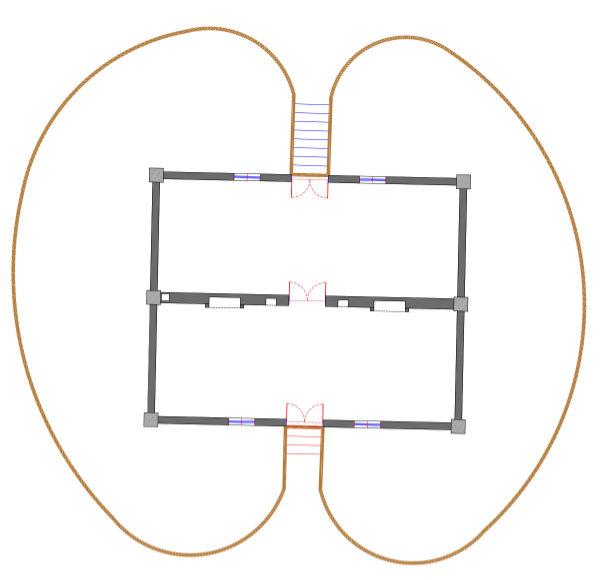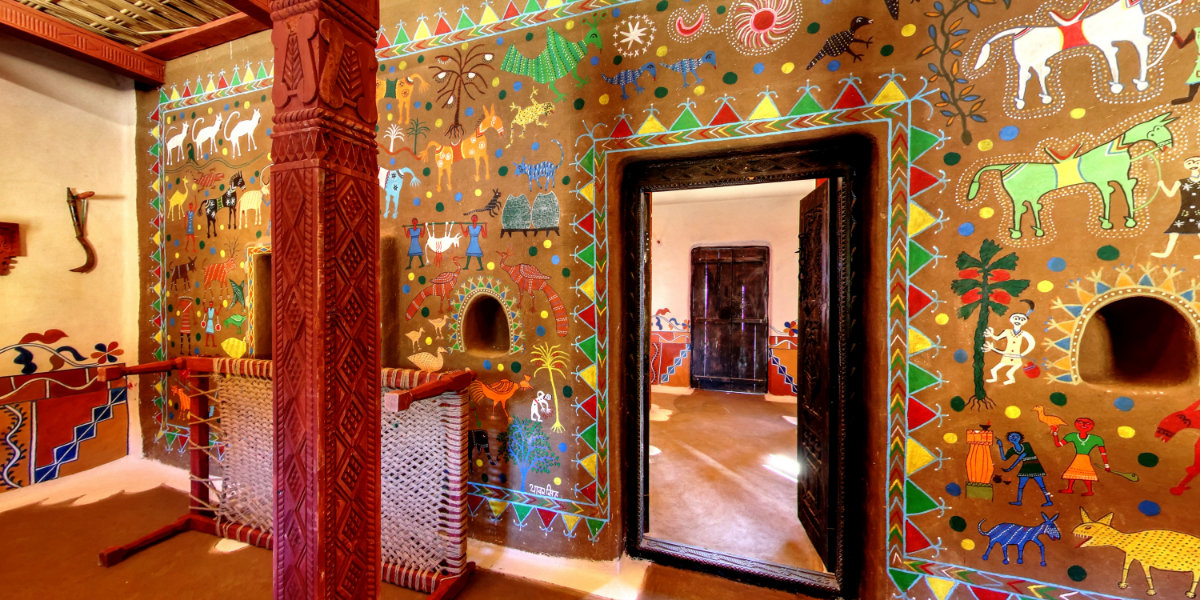Entry Fees : Rs. 20/- per Indian Visitor.
Rs. 400/- per Foreigner.
Camera Charges - Rs 100/- per Camera
 Bheel is the third largest tribe of India. They are spread in Madhya Pradesh, Gujrat, Rajsthan and Maharashtra. In Madhya Pradesh they mainly live in Jhabua, Alirajpur, Dhar, Barwani, Khargone, Neemach and Ratlam areas. According to the 1991 census, the population of Gond tribe in Madhya Pradesh was 26,37,354.
Bheel is the third largest tribe of India. They are spread in Madhya Pradesh, Gujrat, Rajsthan and Maharashtra. In Madhya Pradesh they mainly live in Jhabua, Alirajpur, Dhar, Barwani, Khargone, Neemach and Ratlam areas. According to the 1991 census, the population of Gond tribe in Madhya Pradesh was 26,37,354.
The term Bheel is probably derived from ‘Beel’, a Dravidian word used for a bow. There is a saying in Sanskrit, ‘Bhidanti eti Bhillah’, which means a Bheel is the one who hits the target. The Bheels are often good hunters and like to keep a bow with arrows and Gofan with them. Even a young Bheel can kill a fish in a small river or pond with bow and arrow. Bhilala, Patalia, Barela and Rathwa are principle sub-branches of Bheel tribe. Bheel is such an ancient tribe which finds mentions in various mythological legends, therein they are referred to as Nishaad. The Bheels consider Valmiki and Eklavya as their ancestors. Rajsthani, Malvi and Gujrati terms are found in Bheeli dialect and its oral tradition of legends is very rich.
Bheels ritually worship their ancestor deity Pithora Kunwar, Babo Ind, Jatu Bai once in two-three years. In Pithora Pujan, Likhandra comes and makes a big size picture, in which the story of Pithora Kunwar is depicted. Pithora worship is done by ‘Badwa’ whereas the story is sung by Maalga (singers). In Bheel villages, there are places dedicated to Bapdev, Bhilatdev, Bhairu, Bheel Mata, Kali Mata, Khedo Mai etc.
Looks like to eliminate the lack of colors of the dry barren land, Bheel men and women wear costumes of bright colors. Bheel is a festival lover society so they have great interest in dancing and singing.
The Bheels have a custom of establishing stone or wooden Gatlas (pillars in the memory of a dead person) for their ancestors. These Gatlas are made either for a respected person in the community or for a person who dies of snake bite, killed by a wild animal or accident etc. Apart from sun-moon, horseman, paniharin etc., any special things related to the life of the deceased are also marked on the Gatla.
The Bheels aesthetic sense can be seen in the paintings made by their women on the walls of the house, depictions of Pithora and Gatla and their dresses, ornaments, dancing and singing and in the articles used in their day-to-day lives.

The east-facing Bheel house has a two-slope roof at the front and back. The battens which bear the whole weight of the roof are made of teak. The walls of the houses and granaries were earlier made of thatch prepared by knotting the ‘siyava’ bush growing on the slopes. Bamboo is now used in this work, because these bushes are not easily available now.
The wall is strengthened by applying some clay from inside and outside. The roof is made of teak or date palm leaves or kawelu. There are some special parts of the house – ‘Ohri Wala ghar’ where food is cooked, grains are kept and the deity of the house resides. The goddess of this earth resides on a five hands high teak pillar called Ghinchari and a red cloth is tied on it, which is worshiped on every occasion. The second part of the house which is used for sleeping and keeping other things is called Mewara. The courtyard outside the house in which there is a Palendi to keep pots filled with water. On the right and left side of the outer walls of the house, ‘Dhalia’ is made by taking out thatch, in which cattles, fodder, sticks, woods etc. are kept. In the areas where there is a good teak forest, a lot of wood carving in the houses can be seen there. Women paints open hand prints, fist prints or Sarkala and other auspicious symbols on the walls of the house.

Artist: Artist: Karla, Dumla, Wajiya, Sildar, Sutria, Roshni, Nisha, Aarti, Meena, Lalita
Region – Alirajpur